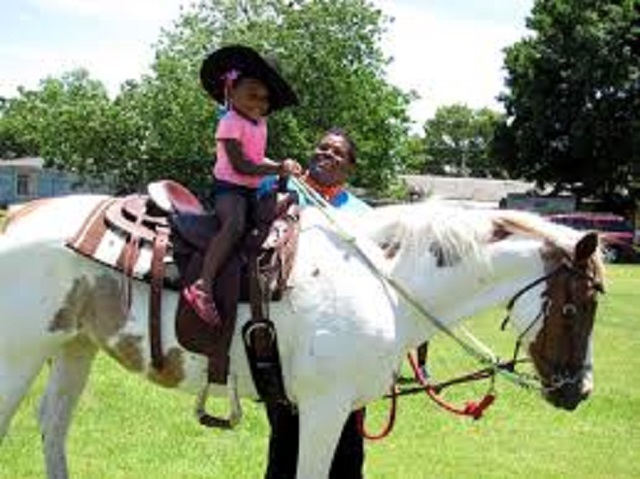
The Sunday News

Robin Muchetu Senior Reporter
UNDERPRIVILEGED children living with disabilities in Bulawayo are benefiting from therapeutic horse riding sessions that are enabling them to exercise their muscles at no cost. The therapeutic healing sessions also include children with learning, cognitive, physical and other special needs. A few of the disabilities they work with, among others are: Cerebral Palsy, Spina Bifida, Arthrogryposis, Spinal Cord Injuries, Hydrocephalis, brain damage, Mutliple Schlerosis, Muscular Dystrophy, Deafness, Down Syndrome and Behavioural issues to name a few.
The horse riding sessions were started in 2013 by Jill Burgesse, the president of the Healing With Horses Therapeutic Centre who has a passion for working with children with disabilities.
“As a student at university one of our extra credit modules was ‘Riding for the Disabled’ and I saw how much it benefited children with disabilities. In our teenage years, my friend Aileen and I both volunteered at a riding school which did a session a week with children with disabilities. For a long time we have had a vision to start working with children with disabilities,” she said.
She said there were many disadvantaged people in Zimbabwe who could not afford therapy of any type for their children, and as a result these children never reached their full potential.
According to her, this type of therapy is offered throughout the world and it combines many different types of therapy in one program. She said they felt they could help these disadvantaged children with disabilities to lead a more independent life in which they could realise their self-worth and how much they could offer their communities.
She said therapeutic horse riding, and hippo therapy, uses the movement of the horse to heal.
“A horse moves in a three dimensional manner which simulates the way a person walks, forward and backwards, and side to side. This movement exercises unused muscles and strengthens these muscles, it also exercises the core of the body in such a way that people with physical disabilities are able to develop and control certain movements which they were unable to do before,” she said.
With time the participants can sit straighter, use better posture, and even walk where they were unable to before. The warmth of the horse relaxes muscles in spasm so that the exercising of the muscles becomes more effective.
She said for emotional and psychological needs, horses are very sensitive animals, and respond to human emotions immediately. Not only do they mirror the child’s emotions so that the instructor can see what the child is feeling, but they respond to the child in such a way that the child sees the effect his moods and actions have on another being.
“The horses also see the reaction which occurs in response to their action, and in such a way they learn to be sensitive to another person and to moderate their actions accordingly. The horses will never judge the child for their disability or emotional instability, and this gives the child a sense of safety and comradeship which the instructor can then reinforce and build on to apply to life. So we are not only enabling the child physically, but also giving them emotional stability and self-confidence, important life skills,” added Burgesse.
When a child comes for initial assessment at the Therapy Center the participant/parent/guardian/care giver fills in a form with medical details and other information. Depending on the disability and degree, they work either on the ground or mounted.
With the group sessions from King George VI they have three “volunteers” per child, one leader for the horse, and a side walker for each side of the child. The child is fitted with a helmet and mounted on the horse, and is held on the horse by the side walkers with specific hand holds according to their disability.
The therapeutic instructor conducts the session and gives the children various exercises to do from on top of the horse. It is essential to realise that it is in fact the movement of the horse which is providing the therapy, but the exercises we do help to strengthen the children and stretch and supple muscles and minds.
Mrs Bugesse said the therapy sessions are fun and are conducted out in the sunshine and fresh air and as such does not seem to the children like physical therapy which can often be associated with pain and hard work. The movement of the horse is so gentle the child does not even realise that they are undergoing therapy.
With the children suffering from physical/ sexual/emotional abuse, the centre does a lot of interaction and ground work with the horses, to allow the children to re build confidence and trust in interactions, and to learn to stand up with confidence in situations where they are being abused.
The center takes any age from 18 months to 90 years old, their only limitation in the mounted sessions is the weight of the person, and the severity of the disability, there are some disabilities for which therapeutic riding is contra-indicated.
Mrs Burgesse said, “If you approach us through the centres that we work with then the referral will come from the therapists at the centre. If you are approaching us from the private sector, we can be approached directly, at the initial visit we will give forms to fill in which will require a referral from a physician, or just medical details depending on the disability, but if you approach us initially we will tell you whether we need a referral from you or not,” she said.
All the sessions for disadvantaged children are done free of charge, while those from the private sector are charged US$10 per session as the therapeutic sessions are expensive to run.



